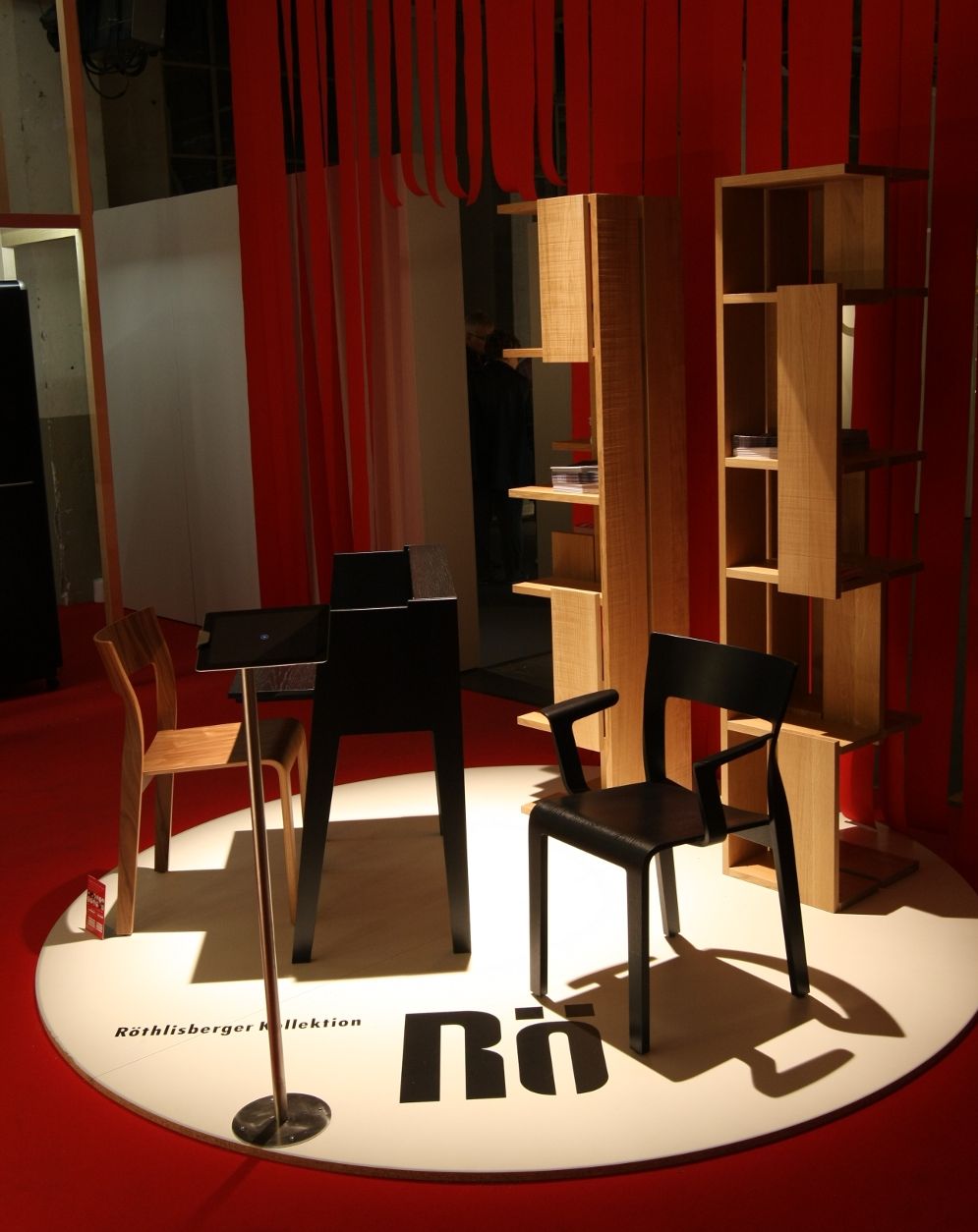Following on from our interview with Nikolas Kerl - a designer/producer at the very start of his career, we continue our exploration into the current state of the Swiss designer furniture industry with a producer who have "a little more" experience.
Born out of a family carpentry and shop fitting business, Röthlsberger Kollektion effectively began producing their own collections in the late 1970s through collaborations with Swiss designers such Trix and Robert Haussmann, Susi and Ueli Berger or Hans Eichenberger. And today the company still works closely with young Swiss talent, such as Atelier Oi or Hanspeter Steiger.
But not just Swiss talent. Röthlisberger also have a long tradition of working with young, international designers; important recent examples include the Australian Tomek Archer and London based Japanese designer Tomoko Azumi.
However, regardless of the nationality of the designer, the Rötlisberger Kollektion range remains in many ways typical of the popular impression of Swiss produced furniture: wooden products produced by trained craftsmen.
A process and quality standard that obviously has its price. Especially once the goods leave Switzerland.
Something that Nikolas Kerl also alluded to.
However, whereas Nikolas is busy trying to establish his brand in the domestic market, Röthlisberger Kollektion have a long established international network of clients - and so are all the more sensitive to the vagaries of the global finance community.
Which is all a long way of saying that Röthlisberger wonderfully combine "traditional Swiss craftsmanship" with a global understanding of design and the modern designer furniture industry: reason enough for us to speak to company boss Jürg Scheidegger.
The interview in Zurich of course wasn't our first conversation with Jürg, he famously starred in one of our early video interview experiments from Milan 2010.
In Zurich however we were much more interested in hearing his views on the health of the designer furniture market in Switzerland and the problems caused by the strong Swiss Franc.
(smow)blog: To begin and by way of an introduction, briefly what is the background to "Röthlisberger Kollektion"?
Jürg Scheidegger: Between 1955 and 1975 Röthlisberger produced furniture for Knoll International. And then in 1975 the company lost the contact which meant that it lost a lot of its income and so was forced to look for solutions. The managing director at the time spoke with his friend, the designer furniture dealer Teo Jakob, and he said "Produce your own collection!", and that was the spark that started the whole thing.
(smow)blog: And so does that mean that from the beginning Röthlisberger have worked with external designers?
Jürg Scheidegger: Yes...
(smow)blog: ... and was that new at that time?
Jürg Scheidegger: Yes, back then there were a lot less brands producing author design. The Italians were strong in that respect, but apart from them there was very little such activity.
(smow)blog: Now there are a lot more brands which of course poses the question, is there room for them all? How big is the Swiss market currently?
Jürg Scheidegger: A Swiss designer furniture retailer today probably has a choice of some 250-300 brands. So a lot more than when we started. I would estimate that the market for designer furniture is about 8-10% of the complete Swiss market. The total market in Switzerland is around 3 billion Francs, Ikea have around 25%, Möbel Pfister 25% and then comes another few larger producers and at the end comes so 8-10% for the designer furniture producers. But that also includes USM and Vitra and then come the smaller companies such as ourselves.
(smow)blog: And so does that mean the export market is especially important for yourselves?
Jürg Scheidegger: Definitely. Basically we all need a foreign market in order to expand and survive.
(smow)blog: Is that principally Europe or does America and Asia play a role?
Jürg Scheidegger: Principally Europe. We do have a few very good customers outwith Europe, but for a company of our size we only really have the resources to properly deal in four or five countries and that is then Europe.
(smow)blog: Which leads on to the obvious question, how difficult was it this summer with the strong Swiss Franc?
Jürg Scheidegger: An absolute catastrophe. It wasn't just difficult, it was a lot worse. It all happened so quickly and there was a period where we basically didn't earn anything. We've now corrected our pricelists, but are selling less because our prices have risen by 20% to match the new situation. And that isn't something that is easy to explain to customers. And in general I think that at the moment, for example, many German dealers when they see a Swiss collection they also see a warning sign "Attention - Expensive" before they even consider if is high quality or good value for money.
(smow)blog: But your hopeful that things will improve.
Jürg Scheidegger: We must hope that the Euro rate normalises, so at 1,30 or 1,40 because then Switzerland is competitive. If that doesn't happen we will have to try to work quicker and better so that we can compensate for the difference. But at the moment it’s very difficult.
